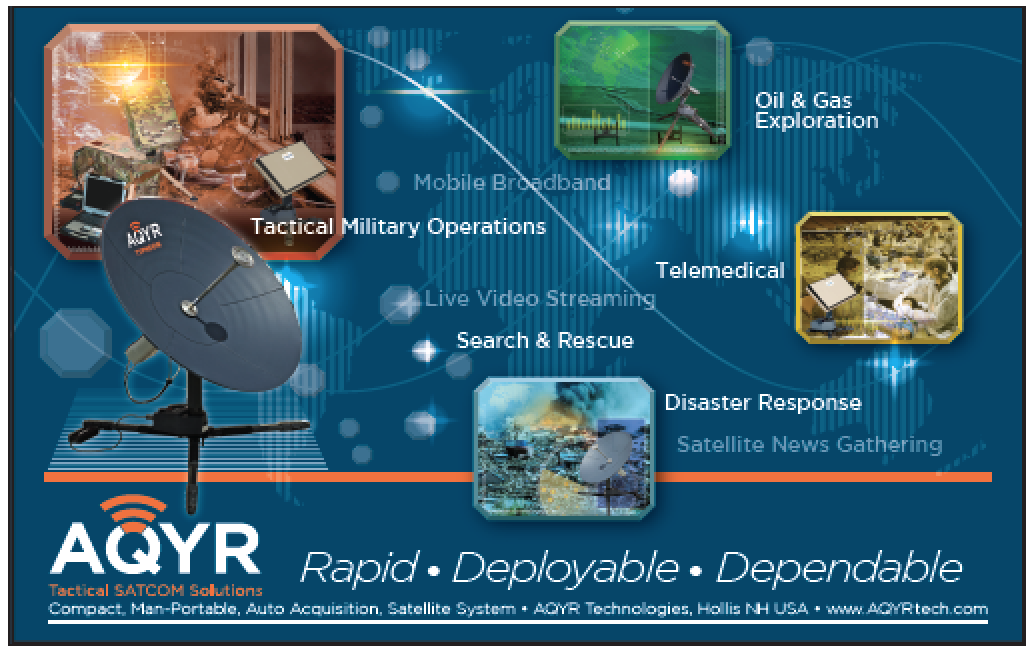Late last year, C4ISR sponsored a webinar with LTC Joel Babbitt, the Product Lead in the Wideband Enterprise Satellite Systems (PL WESS) office of the United States Army.

The webinar covered the Army’s satellite modernization efforts, the challenges the Army currently faces due to aging infrastructure and the trends driving the need for increased satellite bandwidth. One of the topics that LTC Babbitt discussed in depth was a shift towards “Comms-On-The-Move,” and the need to upgrade satellite infrastructure to make this shift possible.
To learn more about “Comms-On-The-Move,” the disadvantages of older satellite ground systems and the reasons why the military is increasingly turning to MILSATCOM to empower these next-generation solutions, we spoke to Tonney Chandler, the program manager for commercial SATCOM at SES Government Solutions. Tonney is well versed in the military’s use of satellite, having previously served as the Chief, Tactical Communications Branch, Architecture, Operations, Networks and Space in the Office of the Chief Information Officer of the Army. The following conversation presents what Tonney had to say:
GovSat Report
What specific use cases is the Army looking to utilize satellite for in theater operations? What capabilities and benefits are they looking to deliver to warfighters over satellite?

Tonney Chandler
First, I can only speak for what we are witnessing on the commercial side as I cannot fully address what LTC Babbitt is witnessing within the Army and Department of Defense.
We are still seeing requirements for basic communications. However, that requirement is shifting and evolving from “Comms-On-The-Halt” to what we refer to as “Comms-On-The-Move.” This means that they’re looking to be able to utilize communications as they move through the battlefield—much like how you would use your cellphone. This way they would be constantly connected—not losing data and not losing or missing any information. And, of course, on the battlefield, intelligence is very important. That is still —and will always be—a major requirement for the military. But now the focus is being able to get what you need it, when you need it.
Communications is evolving as well. Across the federal government, we’re seeing that basic communications don’t just include voice anymore. There is an expectation to have access to real time video teleconferencing (VTC) and other communications and messaging functionalities.
These are all capabilities that the military could look to embrace in theater, and that requires significant bandwidth. Video continues to grow in importance when it comes to intel.
Today, you have eyes in the air, thanks to Remote Piloted Aircraft (RPAs) that generate video that has to be transported back to the intelligence analysis personnel that analyze it and determine what needs to be done based on what they’re seeing. Video—especially high quality video—is essential for intelligence today, and it requires a lot of bandwidth. This HD data helps soldiers in many ways, including helping them identify targets with higher accuracy. There is also a large demand for satellite bandwidth for RPA training in CONUS.
GovSat Report
During the webinar, LTC Babbitt discussed challenges the Army is facing with archaic and antiquated terminals and satellite infrastructure. What specific problems does this antiquated infrastructure pose to the Army? What new technologies and capabilities are they unable to utilize as a result of this aging satellite infrastructure?

Tonney Chandler
The older technology tends to be less efficient with bandwidth usage. With the newer technology, you can get higher throughput with less power. The older antennas have less gain and require more power, so you’re essentially trading power for gain of information. You can only go so high with power, and that limits your ability to pass high amounts of information. With newer, more efficient antennas and receivers, you can get better throughput. This makes the connection faster and more powerful without expending more power.
Then there’s the issue of size and weight. As the military is looking to move towards “Comms-On-The-Move,” which means these systems need to be more transportable. One of the barriers to “Comms-On-The-Move” has historically been the size of the satellite equipment and terminals. They wouldn’t fit into Humvees, and they certainly wouldn’t fit onto RPAs—they were too big and heavy. They’ve made significant advancements in this area. These newer technologies don’t require as much of a trade-off between size and power. They deliver throughputs on par with older systems, but are much smaller, lighter, and more flexible.
GovSat Report
LTC Babbitt mentioned cost savings as a reason for using WGS satellites for military communications instead of COMSATCOM. If it’s less expensive, for what reasons would the Army want to utilize COMSATCOM?
Tonney Chandler
There are only so many WGS satellites. There are eight launched right now, and I believe ten to twelve planned in total. There are limits to the amount of bandwidth that is available aboard those satellites. This means that operations in areas with over-taxed and over-utilized WGS satellites could also create a need for COMSATCOM bandwidth.
The satellite industry produces satellites faster than the government. They have faster refresh cycles and constantly launch new satellites into orbit that take advantage of the latest technologies. Aside from providing bandwidth where WGS may be unable to provide it, using COMSATCOM services gives the military access to advanced satellite technologies that could take them years to fund, develop and launch.
There are also multiple vendors with a wide portfolio of satellites. All told, there are numerous COMSATCOM satellites in orbit that are capable of providing bandwidth to the military. If one vendor’s satellite does not have the bandwidth, or doesn’t have coverage where necessary, another vendor will. By working out relationships with the satellite industry, the military will always have satellite bandwidth and capacity when and where it needs it.
GovSat Report
Are there less costly options (inclined satellites, hosted payloads) that could make COMSATCOM services available at lower costs to the Army? How could these options be utilized by the Army? Why aren’t they being utilized more now?
Tonney Chandler
Inclined satellites are certainly something that the Army can utilize to save money, since those satellites are older, in lower demand and—as a result—are less expensive. The reason these satellites are often considered less desirable is due to the fact that they move, and need to be followed with tracking antennas. But that’s fine for today’s “comms on the move” users, because their antennas are tracking antennas capable of tracking the satellite.
Why aren’t inclined satellites being used more? I’d say that there is a perception issue. There is a stigma and some perceived risks regarding the viability and length of life of the satellite. The military may feel that the health and welfare of the satellite may not be conducive to the length of operations for the mission. Another reason why inclined satellites may not be used more frequently is availability. Because it is the business model of Commercial satellite providers to operate satellites that are station-kept (little to no movement for stationary users), they tend not to keep inclined satellites in the inventory. As a result, there are only so many inclined satellites in orbit and they may not be where capacity is needed.
Hosted payloads are also an option for the military if they’re looking to save money. Hosted payloads would be an alternative to launching a purpose-built satellite for an application. Instead, that payload could be launched on an industry partner’s satellite for a fraction of the cost. However, regarding hosted payloads, there is understandable apprehension because the government would be putting its requirements on a commercial vendor’s satellite with limited control on the overall operation of that satellite. The advantage is that the requirements and capabilities are integrated by the vendor on an already existing platform specially tailored at a lower price. The trade-off is less control of the commercial asset.
To learn more about cost-saving inclined satellites, download the whitepaper, “How Inclined Capacity Reduces Costs For The U.S. Government at ses-gs.com/govsat/resources/white-paper-2-2/govsat/
These articles are republished, courtesy of The Government Satellite Report (GSR) and Executive Editor Ryan Schradin. He is a communications expert and journalist with more than a decade of experience and has edited and contributed to multiple, popular, online trade publications that are focused on government technology, satellite, unified communications and network infrastructure. His work includes editing and writing for the GovSat Report, The Modern Network, Public Sector View, and Cloud Sprawl.

His work for the Government Satellite Report includes editing content, establishing editorial direction, contributing articles about satellite news and trends, and conducting written and podcast interviews. Ryan also contributes to the publication’s industry events and conference coverage, providing in-depth reporting from leading satellite shows.
The Government Satellite Report is sponsored by SES Government Solutions




